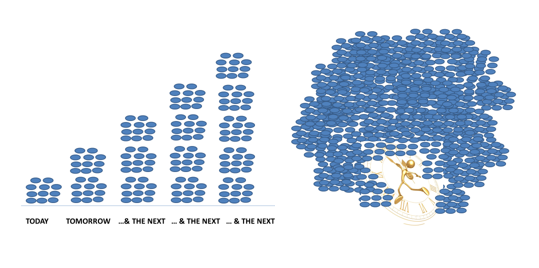"Nothing is so fatiguing as the eternal hanging on of an uncompleted task." - William James
If you are like me, your to-do list can get really long.
With so many urgent and important tasks on our plates, how can we ever get to our backlog of undone work?
One recommendation is to delete tasks that are not done after a preset amount of time has passed. One author suggested giving yourself only 7 days.
Yikes!
I don't know about you, but for me, that would be a recipe for disaster. I have tasks I still need to do even after seven months have passed.
I learned a method from Thanh Pham that has been effective for me. Thanh is the founder of the excellent productivity training company Asian Efficiency. (Do check out their offerings!)
Thanh and his colleagues schedule a full day to reduce their task backlogs. They call this day "Doomsday," because it feels like it will be a "day of pain and suffering."
Are you hooked yet? 😉
I have used this method for several years, and find it transformative!
How can this be? Like Thanh, I begin my day with the expectation of pain and suffering.
But when it is over, this is what I actually get:
- An updated, current task list.
- An immediate boost of energy.
- Readiness to tackle the important projects on my plate.
"These things have to get done, and it's nice to bring them to a close for their own rewards, but the real benefit is how smoothly everything else goes afterwards. What a feeling it is to work on a big project with no collection of minor tasks nagging in the back of your mind."
An added benefit: finding tasks that are on the brink of turning into emergencies.
Years ago, I received a routine reminder to renew my medical license within the next 3 months. Because this was usually a 5-minute online task, I waited until the day before the deadline.
Alas!
The very last question asked for the date of my recertification in dependent and child abuse.
Hmmm... I had not recertified.
I had until the next day to get this done. I located the 2-hour video training, watched it, completed the post-test, and waited for the CME office to send my official certificate. Miraculously I had a free schedule that day and was able to pull it off.
But, lesson learned.
The mechanics
I recommend an "assembly line" approach. This eliminates the need to think about what to do next.
- Get out your list.
- If you can order the items from oldest to newest, do that.
- Read the first (oldest) item, and complete it.
- Go to the next item, and do the same.
- And so on until the time is up.
FAQs
How often should I do this?
The simple answer is "often enough to avoid big backlogs."
You can schedule a regularly recurring time - I'd recommend at least every 3 months. Or do an ad hoc session when your list feels overwhelming.
Do I have to do a full day?
No.
If you can do a full day, you will of course get more done.
But, even a 2 or 3-hour session is beneficial.
What counts as "done?"
Does this seem obvious? If you have done the required work and crossed off or deleted the list item, it's "done!"
But two other outcomes also count.
- Great when it happens: You decide you don't need to do this task. Delete it!
- More often: The "task" is actually a series of tasks.
If you have time for the whole thing, go ahead. But more likely, you won't.
Instead, pick the next thing you can do to move this item forward. Once you have done that, you are "done" for today. Replace the original item with the next thing you must do to finish this work, and take that up later.
Can I minimize the development of backlogs?
Yes, you can!
One option is to spend a little time every day taking care of small tasks.
Dianna Wiest, for example, recommends allocating up to one hour a day for this purpose. The hour can be all at once, or, a minute here, 5 minutes there as you have free moments between other work sessions.
A similar method, recommended by many productivity consultants, is to Do It Now!
David Allen (Getting Things Done) formulates this approach as "the two-minute rule." Any new task that you estimate will take no more than 2 minutes should be done immediately. (If you are wrong, just stop and add to your list. If you were right, you've avoided one more item on your list.)
What you can do next
If your lists feel too long, schedule a two-hour session and see how far you get.
If you find that helpful, plan another session soon to do more.
Then, if you find this method helpful, make a future plan using one or both of these triggers:
Schedule a recurring day or half-day
When your list feels too long, do an ad hoc session
Remember, this "doomsday" experience is not at all about pain and suffering!

No comments:
Post a Comment